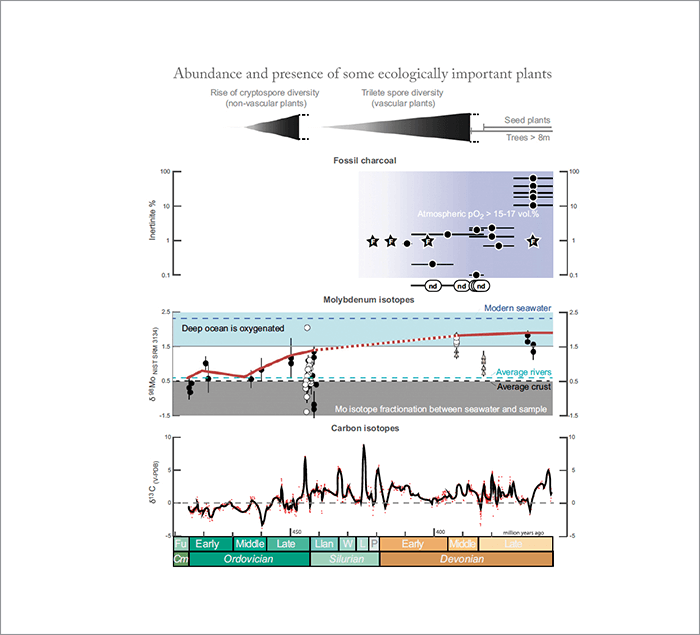Despite atmospheric oxygen over Earth’s history having recently received a lot of airtime (pun unintended), the puzzle of when and how atmospheric oxygen reached modern levels remains unresolved. Climate change scientist Tim Lenton (Professor at the University of Exeter) was struck by how the timing corresponded with the rise of the earliest plants, and, wanting to explore it further, gathered a team. “I was working with co-author Philipp Porada on modeling of the productivity of the early plant biosphere and realized that plants could be responsible for the rise in oxygen,” he says. “I brought the rest of the team together to get a better handle on the geochemical data establishing the timing and mechanism of oxygen rise, and to help develop the model for long-term controls on atmospheric oxygen.”

The team used a computer simulation model built on a process-based understanding of early plant ecophysiology and long-term biogeochemical cycling. “Our predictions were then tested against geochemical data such as the isotopic composition of carbonate rocks over geologic time,” says Lenton. Inductively coupled plasma mass spectrometry (ICP-MS) was used to reconstruct the carbon isotope record and proxies for ocean oxygenation state, notably molybdenum content of shales and their molybdenum isotope composition (measured using a multi-collector ICP-MS). They discovered that the earliest plants could have caused a major rise in the oxygen content of the Earth’s atmosphere – particularly significant for us because it shaped subsequent evolution of animals. The rise in oxygen also represented a fundamental shift in how the concentration of this life-giving gas was regulated and established over time. The fact that early “diminutive-in-stature” plants could have had such a large effect on the planet was something that surprised Lenton. “Current theories predicted that a late Paleozoic oxygen rise (<380 Ma) had to await the later evolution of trees, with other recent studies arguing for a major oxygenation event – of uncertain cause – in the Neoproterozoic Era >541 Ma,” he says. “But neither of these hypotheses fit the data, which shows the key changes unfolding 445-400 Ma. Of course, our theory could also ultimately turn out to be wrong, but so far it has made several predictions that match a range of geochemical data.” Lenton is now working on what stabilized atmospheric oxygen earlier in Earth’s history, in the planet’s middle ages – known as the Proterozoic Eon. “We know the atmosphere was oxidizing after the ‘Great Oxidation’ 2.4 billion years ago, and that the oxygen levels were at least an order of magnitude below today’s level,” he says. “No one currently knows what maintained them at such low levels... but we now have a mechanism to explain that.”
References
- T Lenton et al, “Earliest land plants created modern levels of atmospheric oxygen,” Proc Natl Acad Sci USA, 113, 9704-9709 (2016)




